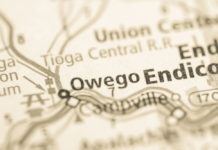A new research report released by the Pennsylvania Health Care Cost Containment Council (PHC4) has revealed that there was an increase of over 1000% in Pennsylvania newborn withdrawal between the fiscal year of 2000-2001 and the 2016-2017 fiscal year.
The recent report, which was released on March 28, demonstrates that Pennsylvania newborn withdrawal has seen a dramatic increase over the last two decades. Newborn withdrawal, which is commonly referred to as Neonatal Abstinence Syndrome (NAS), occurs when a newborn had been exposed to addictive substances while in utero. This can result in the symptoms of withdrawal presenting when the newborn is born and removed from the environment where they had been exposed to the substance in question.
According to the research report released by the PHC4, during the 2000-2001 fiscal year, 1.2 out of every 1,000 newborns in Pennsylvania required addiction recovery treatment after presenting with NAS. However, during the 2016-2017 fiscal year, that number climbed to 15 out of every 1,000 newborns in Pennsylvania needing the benefit of substance abuse recovery treatment as a result of NAS. In other words, the rate of infants struggling with NAS increased by 1,096% between the two periods of time analyzed.
During the 2016-2017 fiscal year, 1,912 newborns were diagnosed with NAS, which constituted 58% of instances of childbirth wherein maternal substance abuse was involved. According to the PHC4 report, in cases where the newborn was diagnosed with NAS, the duration of the hospital stay for the infant increased from an average of 3.5 days to an average of 17.1 days. The report goes on to highlight the fact that this means there was an additional 26,018 days of hospital treatment necessary due to NAS.
The PHC4 analyzed the rates of NAS occurrence across multiple demographics. Among the findings were the fact that the highest rates of NAS occurred with white, non-Hispanic infants.
















